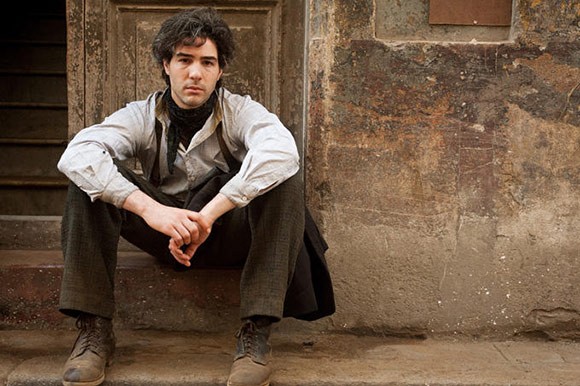While the film which is about the Armenian genocide in Turkey is all of that it somehow misses its mark as an epic in the old classic style of Lawrence of Arabia that Fatih says he admires and aspired to and at the same time fails to catch that idiocyncratic and often humourous personal style that Akin’s many fans have come to expect from the director.
The film is set against the background of the still controversial Armenian genocide during World War I in what was then the Ottoman empire. The story begins in the Turkish town of Aardin in 1915 as the Turkish police round up all Aremenian men in the town including the young blacksmith, Nazaret Manoogian, played by Tahar Rahim, is separated from his family and forced into slave labour. When a group of bandits released from prison with the approval the Ottoman command slit the throats of the no longer needed slaves Nazaret survives due to the kindness of ex-prisoner Mehmet played by Bartu Kucukcaglayan who was falsely imprisoned and refuses to have the crime of murder on his conscience. But Mehmet is forced to make a convincing looking cut to Nazaret’s throat to fool the bandits into believing he has killed him which leaves Nazaret unable to speak for the rest of the film.
Meanwhile back in Mardin, his wife Rakel played by Hindi Zahra and twin daughters Lucinee played by Dina Fakhoury and Arsinee played by Zein Fakhoury have also been rounded up and shipped off to a camp.
Years later, after managing to survive the horrors of the genocide, Nazaret hears that his wife has perished but two daughters are still alive and embarks on an epic journey across Turkey, Mesopotamia, Cuba and finally North Dakota to find them. While Akin manages to fit in a lot of impressive and panoramic scenes for his 20m USD budget and often achieves a look and scale that is truly impressive it might have been better if the journey was a bit less epic and the story more tightly scripted.
As Nazaret treks from country to country following down clues to track his daughters who in each instance have just left before his arrival you begin to get the feeling that it has all gone on a bit too long and that it might have proved more convincing for our hero to have caught up with his daughters a few stops earlier.
The decision to have all the actors speak English was obviously taken with a view to attracting a wider audience for this film that is targeted beyond Akin’s usual arthouse crowd. But in this case it probably would have been better to also have employed actors where are American or English in the main roles as the dialogue often becomes stiff and wooden even in the hands of Rahim who has turned in fine work in French in his previous films.
Akin has said that the film is a very personal one as he grew up hearing about the Armenian genocide and always felt he wanted to eventually make a film about this painful period in Turkish history. The idea is laudable and in many ways he has succeeded as The Cut delivers its message without being preachy or battering the audience with it. But unfortunately its flaws mean that it is unlikely to make the transition to a really wide audience that its producers hoped it would be able to deliver its message to.
Credits: The Cut (Germany, France, Italy, Russia, Poland, Canada, Turkey)
Directed by Fatih Akin
Supervising art director: Allan Starski
Cast: Tahar Rahim, Akin Gazi, Simon Abkarian, George Georgiou
Supported by the Polish Film Institute www.pisf.pl




















